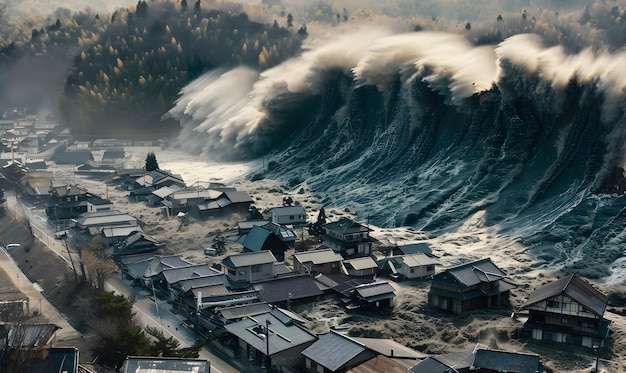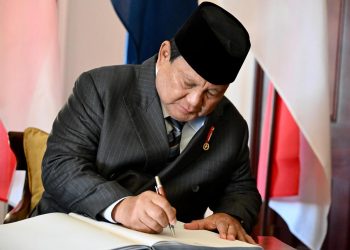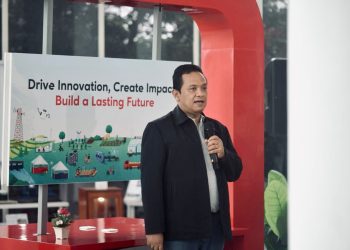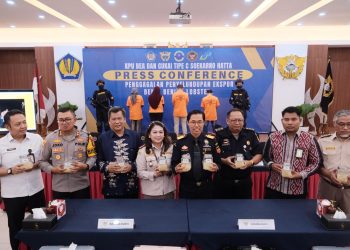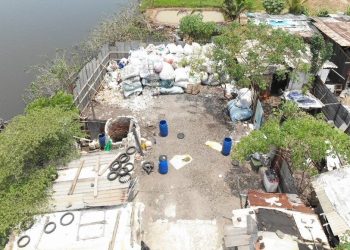Jakarta, Indonesia Sentinel — Indonesia, an archipelago straddling the junction of three major tectonic plates—Indo-Australia, Eurasia, and the Pacific—is among the world’s most earthquake-prone nations. Experts warn that the country faces a growing threat from massive megathrust earthquakes, capable of triggering tsunamis as high as 65 feet. These potential disasters have prompted widespread concern and a renewed focus on mitigation strategies.
The Science of Megathrust Earthquakes
Megathrust earthquakes occur along subduction zones, where one tectonic plate slides beneath another. Indonesia hosts 13 identified megathrust segments, making it a seismic hotspot. Two of the most concerning zones, the Sunda Strait and Mentawai-Siberut, have not experienced significant seismic activity for over 200 years, raising fears of a catastrophic rupture.
C. Prasetyadi, a geodynamics expert from UPN Veteran Yogyakarta, explains the urgency: “If an earthquake originates from a subduction zone, the tsunami could travel at 385 miles per hour, reaching the shore within 20 minutes.” Prasetyadi emphasizes a crucial survival principle called “Triple 20.” This means that if a quake lasts more than 20 seconds, residents have approximately 20 minutes to reach a location at least 65 feet above sea level.
Preparedness: A Race Against Time
Indonesia’s Meteorology, Climatology, and Geophysics Agency (BMKG) has invested heavily in early warning systems. Alerts are now issued within three minutes of seismic activity, giving residents precious time to evacuate. However, with tsunami waves often arriving within 20–30 minutes, effective preparation remains vital.
BMKG Chairperson Dwikorita Karnawati highlights the increasing frequency of damaging earthquakes. In 2024 alone, Indonesia recorded 20 destructive events, while historical data from 2018 to 2023 show a total of 119. She notes that shallow earthquakes, which are more likely to cause tsunamis, are becoming increasingly common.
To mitigate these risks, BMKG has developed detailed models of earthquake and tsunami scenarios for high-risk regions like the industrial city of Cilegon and the Sunda Strait. These models are shared with local governments to enhance preparedness.
Bridging the Knowledge Gap
One of the challenges in Indonesia’s disaster management efforts is ensuring that scientific knowledge reaches vulnerable communities. Prasetyadi’s “Triple 20” rule aims to simplify complex information, providing a practical guide for the public. “This principle bridges the gap between scientific expertise and public understanding,” he explains.
In addition to public education campaigns, local governments are working to build evacuation infrastructure, including tsunami shelters and designated high-ground safe zones.
Global Implications
The implications of a megathrust earthquake in Indonesia extend beyond its borders. The 2004 Indian Ocean tsunami, triggered by a magnitude 9.1 earthquake off Sumatra, killed over 230,000 people across 14 countries. A similar event could disrupt global shipping routes, particularly in the Malacca Strait, one of the world’s busiest waterways.
Indonesia Weather Alert! Floods Hits Multiple Locations in Bandung Due to Heavy Rains
A Call to Action
BMKG’s Karnawati underscores the need for collective readiness. “Preparedness involves everyone—central and local governments, private sectors, and communities,” she says. Her agency continues to monitor seismic gaps in high-risk areas, such as the Sunda Strait and Mentawai-Siberut, which have remained dormant since 1757 and 1797, respectively.
To further reduce risks, BMKG is incorporating advanced technologies and expanding its monitoring network. Karnawati emphasizes that Indonesia must remain vigilant, as the tectonic forces shaping its landscape are constant and unpredictable.
The Path Forward
As Indonesia faces an uncertain seismic future, lessons from past disasters and advancements in science offer hope. By combining public awareness with cutting-edge technology, the nation is striving to reduce casualties and protect its people. Yet, the ultimate challenge lies in translating preparation into action—before the next megathrust strikes.
(Becky)


